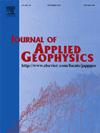Influence of grounded source geometry and terrain on the semi-airborne transient electromagnetic response from 3D simulation data
IF 2.2
3区 地球科学
Q2 GEOSCIENCES, MULTIDISCIPLINARY
引用次数: 0
Abstract
The Semi-Airborne Transient Electromagnetic (SATEM) method utilizes a grounded source and airborne receivers, making it well-suited for high-precision, rapid, and deep electromagnetic surveying in complex terrain. Typically, the grounded source is assumed to be a simple linear form in existing inversions. However, in practice, the long grounded source can be bent or undulating due to the influence of terrain, resulting in significant deviations from the idealized straight-line model. Prior studies have investigated the effects of source bending in the horizontal plane or undulation in the vertical elevation separately. This paper provides a comprehensive analysis of the combined influence of complex terrain on the spatial deployment of the grounded source. Through a thorough examination of the superposition effects of multiple unfavorable factors, the study clarifies the spatio-temporal distribution of the complex source deployment pattern on the SATEM response. The findings provide a basis for confirming the reliability of inversion results and offer suggestions for improving field survey specifications for the SATEM method.
求助全文
约1分钟内获得全文
求助全文
来源期刊

Journal of Applied Geophysics
地学-地球科学综合
CiteScore
3.60
自引率
10.00%
发文量
274
审稿时长
4 months
期刊介绍:
The Journal of Applied Geophysics with its key objective of responding to pertinent and timely needs, places particular emphasis on methodological developments and innovative applications of geophysical techniques for addressing environmental, engineering, and hydrological problems. Related topical research in exploration geophysics and in soil and rock physics is also covered by the Journal of Applied Geophysics.
 求助内容:
求助内容: 应助结果提醒方式:
应助结果提醒方式:


